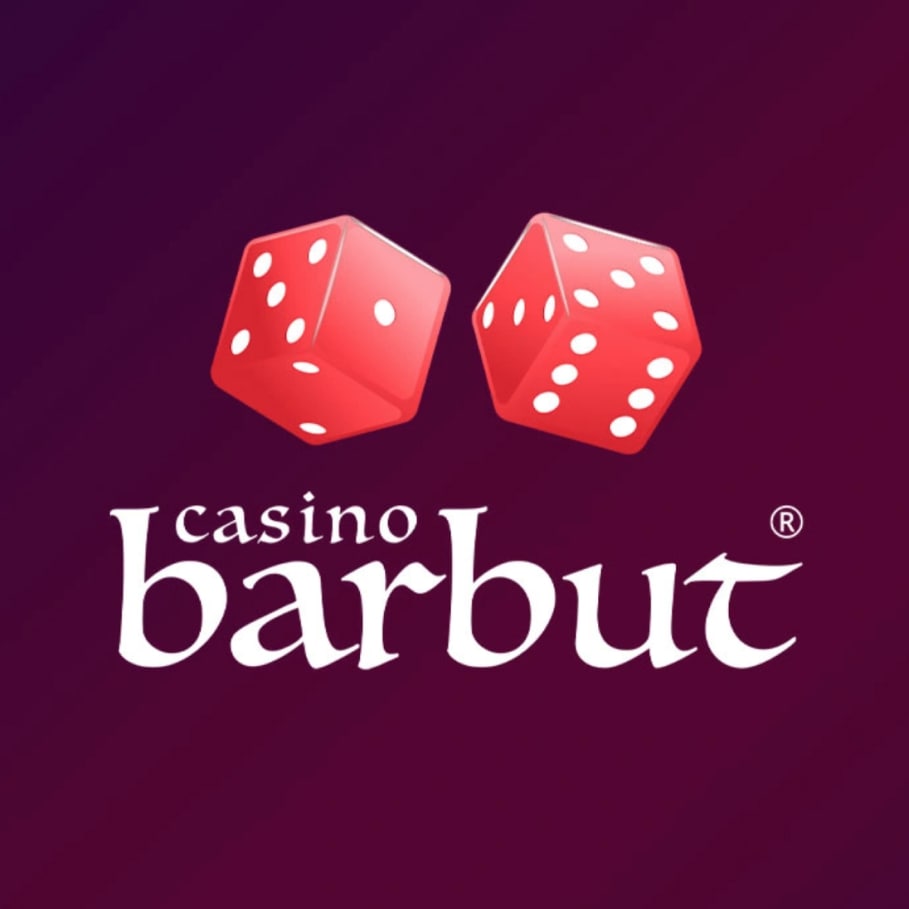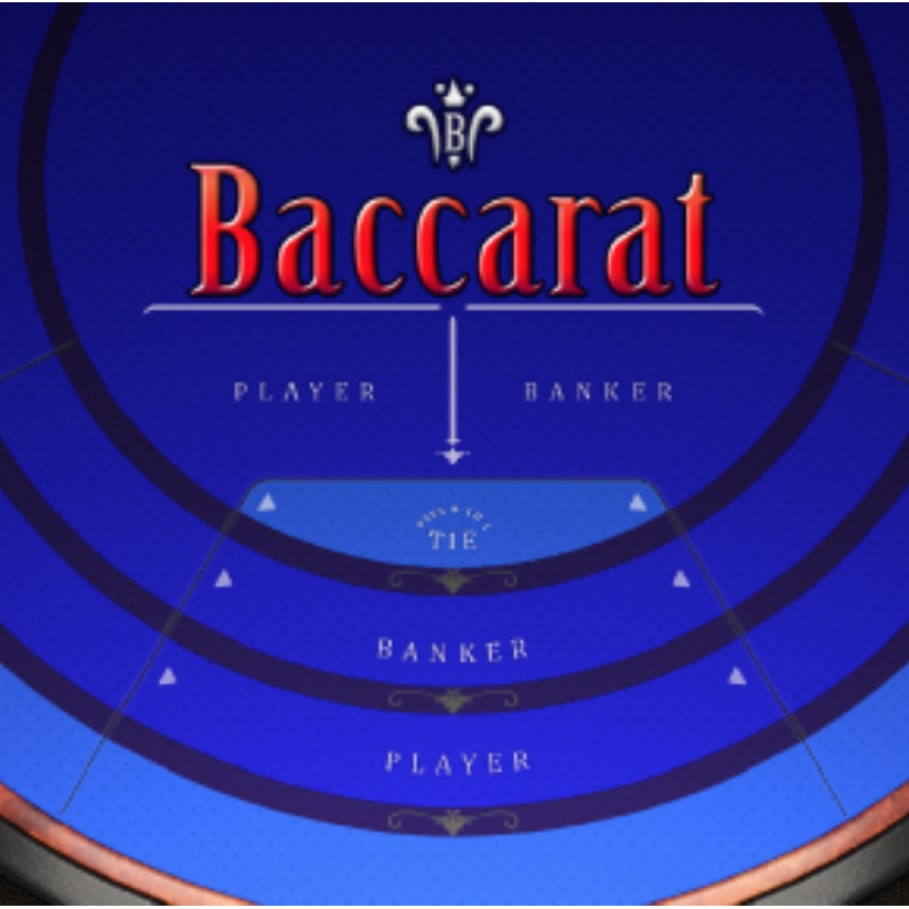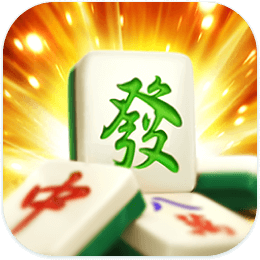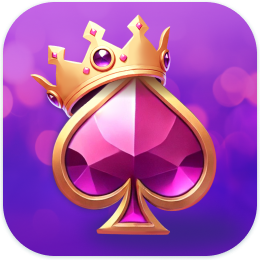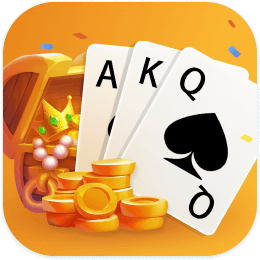Whats the Best Card Counting System? - Gambling With An Edge
September 12, 2022Leave a Comment Written by Arnold Snyder
A Comparison of the Top 100
By Arnold Snyder(From Blackjack Forum Volume I #3, September 1981)© Blackjack Forum 1981
Note to players from Arnold Snyder: This is a technical article on the way professional blackjack players and count system developers compare card counting systems. If you’re new to card counting, and are looking for your first card-counting system, I recommend you start with our Intro to Winning Blackjack article.
There are links in that article to several card counting systems, from the easiest system I’ve ever seen to a full professional-level system, as well as information for new card counters on how to choose the best system for you.
A number of blackjack players have written me asking my opinion of the “best” card counting system. This is a loaded question.
As I mentioned in Blackjack Forum #I I have been using the Hi-Opt II count, because I like its power and simplicity for my ability and style of play. Note from A.S.–Soon after this article was written I switched to the Zen Count for single deck play. When I began shuffle tracking, I switched to the Hi Lo Lite Count. Complete information about both counts is provided in Blackbelt in Blackjack.
If you are using a card counting system with which you are comfortable, and you feel you can play it accurately, then stick with it. There is more money to be made by finding and exploiting lucrative table conditions than by “upgrading” your card counting strategy. Your “act” is more important than any amount of complex mental arithmetic you do at the tables.
Card counting is automatic and boring once you know your system. This is as it should be, so that you may apply your efforts to the more important work of pretending to be a non-card-counter; engaging dealers and pit-bosses in conversation; flirting with cocktail waitresses; acting engrossed in the Keno board, etc.
Some players find card counting easy, and/or are so dedicated to practice that they can accurately apply higher level card-counting strategies. By a “higher level count,” I mean a count that assigns card values other than +1, -1, or 0.
A “multi-parameter count,” on the other hand, is one that keeps separate running counts for various cards. I am of the opinion that the most difficult higher level single parameter card counting system (i.e. – no “side counts”) are easier to play with accuracy, than the “simplest” level one multi-parameter card counting systems.
Most card counters, including serious professionals, should stick with level one single-parameter card counting systems. Some players may obtain a slightly greater advantage by applying a higher level single-parameter count strategy. I’ve analyzed more than 100 different single-parameter systems, including both those that are currently available and some that are purely theoretical to determine the “best”, in terms of potential returns on the dollar.
The Search for the Best Card Counting System: MethodologyMy method of comparing systems is to apply the “Blackjack Formula,” inserting the various systems’ playing efficiencies and betting correlations. If you have my book, The Blackjack Formula, see page 54 for such a comparison of eight popular card counting systems. In this comparison, I tested each system vs. Vegas Strip rules in a singledeck game with a 1 to 4 betting spread, and 60%, 70% and 80% of the cards dealt out.
I’ve similarly tested many other actual and hypothetical card counting systems in both single and multi-deck games, assuming various betting spreads. Although differences between systems are slight, this methodology allows card-counting systems to be ranked by profit potential with relative accuracy if we assume accurate strategy tables are being used.
What I’ve found is that the higher-level systems perform at a rate of profit of about .1% better than the level one systems. My method of computing the playing efficiencies and betting correlations of the various systems is explained in The Blackjack Formula (pages 85 through 90). My method is a simplification of Peter Griffin’s method in Theory of Blackjack, and for all practical purposes, is just as accurate.
The card counting systems that I analyzed in seeking the best ranged from level one through level four (i.e., I did not attempt to analyze any count system with values greater than +4). There appears to be no practical reason for employing a count system greater than a level two. I could find no significantly better count than that which applies the following values:
| A | 2 | 3 | 4 | 5 | 6 | 7 | 8 | 9 | X |
|---|---|---|---|---|---|---|---|---|---|
| -1 | +1 | +1 | +2 | +2 | +2 | +1 | 0 | 0 | -2 |
This count, which I will dub the Zen Count, has a playing efficiency of .63 and a betting efficiency of .97. Curiously, the ace, valued at -1, is not neutralized (valued 0), but “half” neutralized. In other words, I have “taken the middle road. – a zen approach.
It is this trick that keeps the betting efficiency high, while maintaining a very respectable playing efficiency. The following table shows how various counts rank, according to the Blackjack Formula, assuming a 1-to-4 spread, single-deck game, Vegas Strip rules, dealt out 70% between shuffles:
| System | Rate of Profit |
|---|---|
| Zen Count | 2.00 |
| Uston APC | 1.98 |
| Revere APC ’73 | 1.97 |
| Wong Halves | 1.96 |
| Hi-Opt II | 1.96 |
| Canfield Master | 1.96 |
| Revere Point Count | 1.95 |
| Uston Adv. +/- | 1.89 |
| Canfield Expert | 1.88 |
| Hi-Lo | 1.87 |
| Hi-Opt I | 1.86 |
| Revere +/- | 1.86 |
| Andersen Count | 1.80 |
| DHM (Simple) | 1.78 |
The top-ranked (level two) Zen Count is simpler than any of the next three counts which are level 3, level 4, and level 3, respectively. As I noted earlier, I use the Hi-Opt II count. My reason for this is that the gain from using the Zen Count is very slight, and frankly Hi-Opt II is slightly simpler. I’m a great believer in simplicity. Nor could I say for certain that the Zen Count is undeniably superior. The Blackjack Formula indicates a negligible superiority under most conditions.
Of academic interest, the best single parameter card counting systems are those numbered #91, #92, #93 and #94. These systems represent the upper limit of single parameter systems which score high in both playing efficiency and betting correlation.
All of these systems employ the same device of not-quite-neutralizing the Ace. Although I believe it would be easier to play one of these level four single-parameter systems accurately, than it would be to play any multi-parameter system, I would not advise any player to mess with one of these monsters. The potential gain from using one of these counts, compared to that of the relatively simple Zen count, is negligible.
For instance, in the Vegas Strip game used in the prior comparison, in which the Blackjack Formula predicts the Uston APC would win at a rate of 1.98% and the Zen Count would win 2.00%, any one of the level four counts would win at a rate of only 2.02%.
The Blackiack Formula, to be fair, is not actually accurate enough to make such a fine comparison. But count #92, which has a playing efficiency of .67, and a betting correlation of .95, would undeniably rank higher than Hi-Opt II, which also has a playing efficiency of .67, but a betting correlation of only .91.
The following table lists the playing efficiencies and betting correlations of 100 selected card counting systems (with sincere thanks to Brian Gothberg for writing the computer program that generated these results).
| Count | 2 | 3 | 4 | 5 | 6 | 7 | 8 | 9 | X | A | PE | BC |
|---|---|---|---|---|---|---|---|---|---|---|---|---|
| 1 | 0 | 0 | 0 | 1 | 0 | 0 | 0 | 0 | 0 | -1 | .05 | .53 |
| 2 | 1 | 1 | 1 | 1 | 0 | 0 | 0 | 0 | -1 | 0 | .56 | .86 |
| 3 | 0 | 1 | 1 | 1 | 1 | 0 | 0 | 0 | -1 | 0 | .61 | .88 |
| 4 | 0 | 0 | 1 | 1 | 1 | 1 | 0 | 0 | -1 | 0 | .64 | .85 |
| 5 | 1 | 1 | 1 | 1 | 1 | 0 | 0 | 0 | -1 | -1 | .51 | .97 |
| 6 | 0 | 1 | 1 | 1 | 1 | 1 | 0 | 0 | -1 | -1 | .55 | .95 |
| 7 | 1 | 1 | 1 | 1 | 1 | 0 | 0 | -1 | -1 | 0 | .59 | .92 |
| 8 | 0 | 1 | 1 | 1 | 1 | 1 | 0 | -1 | -1 | 0 | .63 | .89 |
| 9 | 1 | 1 | 1 | 1 | 1 | 1 | 0 | -1 | -1 | -1 | .54 | .98 |
| 10 | 0 | 0 | 1 | 1 | 0 | 0 | 0 | 0 | 0 | -2 | .05 | .58 |
| 11 | 0 | 0 | 2 | 2 | 0 | 0 | 0 | 0 | -1 | 0 | .49 | .78 |
| 12 | 0 | 0 | 1 | 2 | 1 | 0 | 0 | 0 | -1 | 0 | .57 | .83 |
| 13 | 0 | 1 | 1 | 2 | 1 | 0 | 0 | 0 | -1 | -1 | .51 | .94 |
| 14 | 0 | 0 | 1 | 2 | 1 | 1 | 0 | 0 | -1 | -1 | .53 | .91 |
| 15 | 0 | 1 | 1 | 2 | 1 | 0 | 0 | -1 | -1 | 0 | .57 | .89 |
| 16 | 0 | 0 | 1 | 2 | 1 | 1 | 0 | -1 | -1 | 0 | .59 | .86 |
| 17 | 0 | 0 | 2 | 2 | 1 | 0 | 0 | 0 | -1 | -1 | .47 | .89 |
| 18 | 0 | 0 | 2 | 2 | 1 | 0 | 0 | -1 | -1 | 0 | .53 | .84 |
| 19 | 1 | 1 | 1 | 2 | 1 | 0 | 0 | -1 | -1 | -1 | .51 | .97 |
| 20 | 0 | 1 | 1 | 2 | 1 | 1 | 0 | -1 | -1 | -1 | .54 | .96 |
| 21 | 0 | 1 | 2 | 2 | 1 | 0 | 0 | -1 | -1 | -1 | .49 | .94 |
| 22 | 0 | 0 | 2 | 2 | 2 | 0 | 0 | -1 | -1 | -1 | .46 | .89 |
| 23 | 1 | 1 | 1 | 2 | 1 | 0 | 0 | 0 | -1 | -2 | .4 | .96 |
| 24 | 0 | 1 | 1 | 2 | 1 | 1 | 0 | 0 | -1 | -2 | .43 | .94 |
| 25 | 0 | 1 | 2 | 2 | 1 | 0 | 0 | 0 | -1 | -2 | .4 | .93 |
| 26 | 0 | 0 | 2 | 2 | 2 | 0 | 0 | 0 | -1 | -2 | .38 | .88 |
| 27 | 1 | 1 | 1 | 2 | 1 | 1 | 0 | -1 | -1 | -2 | .45 | .98 |
| 28 | 1 | 1 | 2 | 2 | 1 | 0 | 0 | -1 | -1 | -2 | .41 | .97 |
| 29 | 1 | 1 | 1 | 1 | 1 | 1 | 1 | -1 | -1 | -2 | .43 | .94 |
| 30 | 0 | 1 | 2 | 2 | 2 | 0 | 0 | -1 | -1 | -2 | .41 | .93 |
| 31 | 0 | 1 | 2 | 2 | 1 | 1 | 0 | -1 | -1 | -2 | .44 | .95 |
| 32 | 0 | 0 | 2 | 2 | 2 | 1 | 0 | -1 | -1 | -2 | .42 | .91 |
| 33 | 1 | 1 | 1 | 1 | 1 | 1 | 1 | 1 | -2 | 1 | .61 | .72 |
| 34 | 1 | 1 | 1 | 1 | 1 | 1 | 1 | 1 | -2 | 0 | .61 | .8 |
| 35 | 1 | 1 | 1 | 2 | 1 | 1 | 1 | 0 | -2 | 0 | .67 | .88 |
| 36 | 1 | 1 | 2 | 2 | 1 | 1 | 0 | 0 | -2 | 0 | .67 | .91 |
| 37 | 1 | 1 | 2 | 2 | 2 | 0 | 0 | 0 | -2 | 0 | .63 | .9 |
| 38 | 0 | 1 | 2 | 2 | 2 | 1 | 0 | 0 | -2 | 0 | .66 | .89 |
| 39 | 0 | 2 | 2 | 2 | 2 | 1 | 0 | -1 | -2 | 0 | .65 | .91 |
| 40 | 1 | 1 | 2 | 2 | 2 | 1 | 0 | -1 | -2 | 0 | .67 | .93 |
| 41 | 1 | 2 | 2 | 2 | 2 | 0 | 0 | -1 | -2 | 0 | .62 | .92 |
| 42 | 1 | 1 | 2 | 2 | 2 | 1 | 0 | 0 | -2 | -1 | .63 | .97 |
| 43 | 1 | 2 | 2 | 2 | 2 | 0 | 0 | 0 | -2 | -1 | .58 | .95 |
| 44 | 0 | 2 | 2 | 2 | 2 | 1 | 0 | 0 | -2 | -1 | .61 | .94 |
| 45 | 1 | 2 | 2 | 2 | 2 | 1 | 0 | -1 | -2 | -1 | .62 | .98 |
| 46 | 2 | 2 | 2 | 2 | 2 | 0 | 0 | -1 | -2 | -1 | .57 | .97 |
| 47 | 0 | 2 | 2 | 2 | 2 | 2 | 0 | -1 | -2 | -1 | .62 | .95 |
| 48 | 1 | 2 | 2 | 2 | 2 | 1 | 0 | -2 | -2 | 0 | .63 | .93 |
| 49 | 1 | 2 | 2 | 2 | 2 | 1 | 0 | 0 | -2 | -2 | .56 | .99 |
| 50 | 2 | 2 | 2 | 2 | 2 | 1 | 0 | -2 | -2 | -1 | .59 | .97 |
| 51 | 2 | 2 | 2 | 2 | 2 | 1 | 0 | -1 | -2 | -2 | .55 | 1 |
| 52 | 1 | 2 | 2 | 2 | 2 | 2 | 0 | -2 | -2 | -1 | .61 | .96 |
| 53 | 1 | 2 | 2 | 2 | 2 | 2 | 0 | -1 | -2 | -2 | .57 | .99 |
| 54 | 2 | 2 | 2 | 2 | 2 | 1 | 0 | 0 | -2 | -3 | .48 | .98 |
| 55 | 1 | 2 | 2 | 2 | 2 | 2 | 0 | 0 | -2 | -3 | .49 | .97 |
| 56 | 1 | 2 | 2 | 3 | 2 | 1 | 0 | 0 | -2 | -3 | .49 | .98 |
| 57 | 1 | 2 | 3 | 3 | 2 | 0 | 0 | 0 | -2 | -3 | .46 | .97 |
| 58 | 1 | 2 | 3 | 3 | 1 | 1 | 0 | 0 | -2 | -3 | .48 | .97 |
| 59 | 1 | 1 | 3 | 3 | 2 | 1 | 0 | 0 | -2 | -3 | .49 | .97 |
| 60 | 0 | 2 | 3 | 3 | 2 | 1 | 0 | 0 | -2 | -3 | .48 | .96 |
| 61 | 0 | 2 | 3 | 3 | 3 | 0 | 0 | 0 | -2 | -3 | .45 | .94 |
| 62 | 1 | 2 | 2 | 3 | 2 | 1 | 0 | -1 | -2 | -2 | .57 | 1 |
| 63 | 1 | 2 | 3 | 3 | 2 | 0 | 0 | -1 | -2 | -2 | .53 | .98 |
| 64 | 0 | 2 | 3 | 3 | 2 | 1 | 0 | -1 | -2 | -2 | .55 | .97 |
| 65 | 1 | 2 | 3 | 3 | 2 | 1 | 0 | -1 | -2 | -3 | .5 | 1 |
| 66 | 1 | 2 | 3 | 3 | 2 | 1 | 0 | 0 | -3 | 0 | .66 | .92 |
| 67 | 2 | 2 | 2 | 3 | 2 | 1 | 0 | 0 | -3 | 0 | .66 | .92 |
| 68 | 2 | 2 | 3 | 3 | 2 | 0 | 0 | 0 | -3 | 0 | .63 | .91 |
| 69 | 1 | 2 | 3 | 3 | 3 | 0 | 0 | 0 | -3 | 0 | .63 | .9 |
| 70 | 1 | 2 | 3 | 3 | 2 | 2 | 0 | -1 | -3 | 0 | .68 | .93 |
| 71 | 2 | 2 | 3 | 3 | 2 | 2 | 0 | -1 | -3 | 0 | .67 | .94 |
| 72 | 2 | 2 | 3 | 3 | 3 | 1 | 0 | -1 | -3 | 0 | .66 | .94 |
| 73 | 1 | 2 | 3 | 3 | 3 | 2 | 0 | -2 | -3 | 0 | .67 | .93 |
| 74 | 1 | 2 | 3 | 3 | 2 | 2 | 0 | 0 | -3 | -1 | .65 | .95 |
| 75 | 2 | 2 | 3 | 3 | 2 | 2 | 0 | 0 | -3 | -1 | .64 | .96 |
| 76 | 2 | 2 | 3 | 3 | 3 | 1 | 0 | 0 | -3 | -1 | .63 | .96 |
| 77 | 1 | 2 | 3 | 3 | 2 | 2 | 0 | 0 | -3 | -2 | .61 | .97 |
| 78 | 2 | 2 | 3 | 3 | 3 | 2 | 0 | -1 | -3 | -2 | .62 | .99 |
| 79 | 2 | 2 | 3 | 3 | 3 | 2 | 0 | 0 | -3 | -3 | .56 | .99 |
| 80 | 2 | 3 | 3 | 3 | 3 | 2 | 0 | -1 | -3 | -3 | .57 | 1 |
| 81 | 1 | 2 | 3 | 4 | 2 | 1 | 0 | -1 | -3 | 0 | .66 | .93 |
| 82 | 2 | 2 | 3 | 4 | 2 | 1 | 0 | -2 | -3 | 0 | .65 | .94 |
| 83 | 2 | 2 | 3 | 4 | 2 | 2 | 0 | -2 | -3 | -1 | .64 | .97 |
| 84 | 2 | 2 | 3 | 4 | 3 | 2 | 0 | -2 | -3 | -2 | .61 | .99 |
| 85 | 2 | 2 | 3 | 4 | 3 | 2 | 0 | -1 | -3 | -3 | .58 | 1 |
| 86 | 2 | 3 | 3 | 4 | 3 | 2 | 0 | -1 | -3 | -4 | .53 | 1 |
| 87 | 2 | 3 | 3 | 4 | 3 | 2 | 0 | -1 | -4 | 0 | .68 | .93 |
| 88 | 2 | 3 | 3 | 4 | 3 | 2 | 0 | 0 | -4 | -1 | .66 | .95 |
| 89 | 2 | 2 | 4 | 4 | 3 | 2 | 0 | 0 | -4 | -1 | .66 | .95 |
| 90 | 3 | 3 | 4 | 4 | 2 | 2 | 0 | -1 | -4 | -1 | .64 | .96 |
| 91 | 2 | 3 | 4 | 4 | 3 | 2 | 0 | -1 | -4 | -1 | .66 | .96 |
| 92 | 2 | 2 | 4 | 4 | 3 | 3 | 0 | -1 | -4 | -1 | .67 | .95 |
| 93 | 2 | 3 | 4 | 4 | 3 | 3 | 0 | -2 | -4 | -1 | .66 | .96 |
| 94 | 3 | 3 | 4 | 4 | 3 | 2 | 0 | -2 | -4 | -1 | .65 | .97 |
| 95 | 3 | 3 | 4 | 4 | 3 | 3 | 0 | -2 | -4 | -2 | .63 | .98 |
| 96 | 3 | 3 | 4 | 4 | 3 | 3 | 0 | 0 | -4 | -4 | .56 | .99 |
| 97 | 3 | 3 | 4 | 4 | 4 | 2 | 0 | 0 | -4 | -4 | .56 | .99 |
| 98 | 3 | 3 | 4 | 4 | 4 | 3 | 0 | -1 | -4 | -4 | .57 | 1 |
| 99 | 3 | 3 | 4 | 4 | 3 | 3 | 0 | -1 | -4 | -3 | .6 | .99 |
| 100 | 3 | 3 | 4 | 4 | 4 | 2 | 0 | -1 | -4 | -3 | .6 | .99 |
Any player who would like to play what may be the “best” practical card counting system ever devised, may obtain complete strategy tables for the Zen Count (developed by yours truly) in the 2005 edition of Blackbelt in Blackjack.
I used the Zen Count myself when playing deeply dealt single deck (back when such games were available at full payouts on naturals). You can find more information on the Zen Count here: Zen Count Indices. If I were still strictly counting cards, I would still be using the Zen Count.
However, when I switched to shuffle tracking, I switched to the Hi-Lo Lite count. I made that switch because I wanted an easier count (to allow for the complications added by shuffle tracking) without giving up much power. You can find a link to information on the Hi-Lo Lite at the upper left of this page, with complete information in Blackbelt in Blackjack. ♠
By Arnold Snyder(From Blackjack Forum Volume I #3, September 1981)© Blackjack Forum 1981
Note to players from Arnold Snyder: This is a technical article on the way professional blackjack players and count system developers compare card counting systems. If you’re new to card counting, and are looking for your first card-counting system, I recommend you start with our Intro to Winning Blackjack article.
There are links in that article to several card counting systems, from the easiest system I’ve ever seen to a full professional-level system, as well as information for new card counters on how to choose the best system for you.
A number of blackjack players have written me asking my opinion of the “best” card counting system. This is a loaded question.
As I mentioned in Blackjack Forum #I I have been using the Hi-Opt II count, because I like its power and simplicity for my ability and style of play. Note from A.S.–Soon after this article was written I switched to the Zen Count for single deck play. When I began shuffle tracking, I switched to the Hi Lo Lite Count. Complete information about both counts is provided in Blackbelt in Blackjack.
If you are using a card counting system with which you are comfortable, and you feel you can play it accurately, then stick with it. There is more money to be made by finding and exploiting lucrative table conditions than by “upgrading” your card counting strategy. Your “act” is more important than any amount of complex mental arithmetic you do at the tables.
Card counting is automatic and boring once you know your system. This is as it should be, so that you may apply your efforts to the more important work of pretending to be a non-card-counter; engaging dealers and pit-bosses in conversation; flirting with cocktail waitresses; acting engrossed in the Keno board, etc.
Some players find card counting easy, and/or are so dedicated to practice that they can accurately apply higher level card-counting strategies. By a “higher level count,” I mean a count that assigns card values other than +1, -1, or 0.
A “multi-parameter count,” on the other hand, is one that keeps separate running counts for various cards. I am of the opinion that the most difficult higher level single parameter card counting system (i.e. – no “side counts”) are easier to play with accuracy, than the “simplest” level one multi-parameter card counting systems.
Most card counters, including serious professionals, should stick with level one single-parameter card counting systems. Some players may obtain a slightly greater advantage by applying a higher level single-parameter count strategy. I’ve analyzed more than 100 different single-parameter systems, including both those that are currently available and some that are purely theoretical to determine the “best”, in terms of potential returns on the dollar.
The Search for the Best Card Counting System: Methodology My method of comparing systems is to apply the “Blackjack Formula,” inserting the various systems’ playing efficiencies and betting correlations. If you have my book, The Blackjack Formula, see page 54 for such a comparison of eight popular card counting systems. In this comparison, I tested each system vs. Vegas Strip rules in a singledeck game with a 1 to 4 betting spread, and 60%, 70% and 80% of the cards dealt out.
I’ve similarly tested many other actual and hypothetical card counting systems in both single and multi-deck games, assuming various betting spreads. Although differences between systems are slight, this methodology allows card-counting systems to be ranked by profit potential with relative accuracy if we assume accurate strategy tables are being used.
What I’ve found is that the higher-level systems perform at a rate of profit of about .1% better than the level one systems. My method of computing the playing efficiencies and betting correlations of the various systems is explained in The Blackjack Formula (pages 85 through 90). My method is a simplification of Peter Griffin’s method in Theory of Blackjack, and for all practical purposes, is just as accurate.
The card counting systems that I analyzed in seeking the best ranged from level one through level four (i.e., I did not attempt to analyze any count system with values greater than +4). There appears to be no practical reason for employing a count system greater than a level two. I could find no significantly better count than that which applies the following values:
| A | 2 | 3 | 4 | 5 | 6 | 7 | 8 | 9 | X |
|---|---|---|---|---|---|---|---|---|---|
| -1 | +1 | +1 | +2 | +2 | +2 | +1 | 0 | 0 | -2 |
This count, which I will dub the Zen Count, has a playing efficiency of .63 and a betting efficiency of .97. Curiously, the ace, valued at -1, is not neutralized (valued 0), but “half” neutralized. In other words, I have “taken the middle road. – a zen approach.
It is this trick that keeps the betting efficiency high, while maintaining a very respectable playing efficiency. The following table shows how various counts rank, according to the Blackjack Formula, assuming a 1-to-4 spread, single-deck game, Vegas Strip rules, dealt out 70% between shuffles:
| System | Rate of Profit |
|---|---|
| Zen Count | 2.00 |
| Uston APC | 1.98 |
| Revere APC ’73 | 1.97 |
| Wong Halves | 1.96 |
| Hi-Opt II | 1.96 |
| Canfield Master | 1.96 |
| Revere Point Count | 1.95 |
| Uston Adv. +/- | 1.89 |
| Canfield Expert | 1.88 |
| Hi-Lo | 1.87 |
| Hi-Opt I | 1.86 |
| Revere +/- | 1.86 |
| Andersen Count | 1.80 |
| DHM (Simple) | 1.78 |
The top-ranked (level two) Zen Count is simpler than any of the next three counts which are level 3, level 4, and level 3, respectively. As I noted earlier, I use the Hi-Opt II count. My reason for this is that the gain from using the Zen Count is very slight, and frankly Hi-Opt II is slightly simpler. I’m a great believer in simplicity. Nor could I say for certain that the Zen Count is undeniably superior. The Blackjack Formula indicates a negligible superiority under most conditions.
Of academic interest, the best single parameter card counting systems are those numbered #91, #92, #93 and #94. These systems represent the upper limit of single parameter systems which score high in both playing efficiency and betting correlation.
All of these systems employ the same device of not-quite-neutralizing the Ace. Although I believe it would be easier to play one of these level four single-parameter systems accurately, than it would be to play any multi-parameter system, I would not advise any player to mess with one of these monsters. The potential gain from using one of these counts, compared to that of the relatively simple Zen count, is negligible.
For instance, in the Vegas Strip game used in the prior comparison, in which the Blackjack Formula predicts the Uston APC would win at a rate of 1.98% and the Zen Count would win 2.00%, any one of the level four counts would win at a rate of only 2.02%.
The Blackiack Formula, to be fair, is not actually accurate enough to make such a fine comparison. But count #92, which has a playing efficiency of .67, and a betting correlation of .95, would undeniably rank higher than Hi-Opt II, which also has a playing efficiency of .67, but a betting correlation of only .91.
The following table lists the playing efficiencies and betting correlations of 100 selected card counting systems (with sincere thanks to Brian Gothberg for writing the computer program that generated these results).
| Count | 2 | 3 | 4 | 5 | 6 | 7 | 8 | 9 | X | A | PE | BC |
|---|---|---|---|---|---|---|---|---|---|---|---|---|
| 1 | 0 | 0 | 0 | 1 | 0 | 0 | 0 | 0 | 0 | -1 | .05 | .53 |
| 2 | 1 | 1 | 1 | 1 | 0 | 0 | 0 | 0 | -1 | 0 | .56 | .86 |
| 3 | 0 | 1 | 1 | 1 | 1 | 0 | 0 | 0 | -1 | 0 | .61 | .88 |
| 4 | 0 | 0 | 1 | 1 | 1 | 1 | 0 | 0 | -1 | 0 | .64 | .85 |
| 5 | 1 | 1 | 1 | 1 | 1 | 0 | 0 | 0 | -1 | -1 | .51 | .97 |
| 6 | 0 | 1 | 1 | 1 | 1 | 1 | 0 | 0 | -1 | -1 | .55 | .95 |
| 7 | 1 | 1 | 1 | 1 | 1 | 0 | 0 | -1 | -1 | 0 | .59 | .92 |
| 8 | 0 | 1 | 1 | 1 | 1 | 1 | 0 | -1 | -1 | 0 | .63 | .89 |
| 9 | 1 | 1 | 1 | 1 | 1 | 1 | 0 | -1 | -1 | -1 | .54 | .98 |
| 10 | 0 | 0 | 1 | 1 | 0 | 0 | 0 | 0 | 0 | -2 | .05 | .58 |
| 11 | 0 | 0 | 2 | 2 | 0 | 0 | 0 | 0 | -1 | 0 | .49 | .78 |
| 12 | 0 | 0 | 1 | 2 | 1 | 0 | 0 | 0 | -1 | 0 | .57 | .83 |
| 13 | 0 | 1 | 1 | 2 | 1 | 0 | 0 | 0 | -1 | -1 | .51 | .94 |
| 14 | 0 | 0 | 1 | 2 | 1 | 1 | 0 | 0 | -1 | -1 | .53 | .91 |
| 15 | 0 | 1 | 1 | 2 | 1 | 0 | 0 | -1 | -1 | 0 | .57 | .89 |
| 16 | 0 | 0 | 1 | 2 | 1 | 1 | 0 | -1 | -1 | 0 | .59 | .86 |
| 17 | 0 | 0 | 2 | 2 | 1 | 0 | 0 | 0 | -1 | -1 | .47 | .89 |
| 18 | 0 | 0 | 2 | 2 | 1 | 0 | 0 | -1 | -1 | 0 | .53 | .84 |
| 19 | 1 | 1 | 1 | 2 | 1 | 0 | 0 | -1 | -1 | -1 | .51 | .97 |
| 20 | 0 | 1 | 1 | 2 | 1 | 1 | 0 | -1 | -1 | -1 | .54 | .96 |
| 21 | 0 | 1 | 2 | 2 | 1 | 0 | 0 | -1 | -1 | -1 | .49 | .94 |
| 22 | 0 | 0 | 2 | 2 | 2 | 0 | 0 | -1 | -1 | -1 | .46 | .89 |
| 23 | 1 | 1 | 1 | 2 | 1 | 0 | 0 | 0 | -1 | -2 | .4 | .96 |
| 24 | 0 | 1 | 1 | 2 | 1 | 1 | 0 | 0 | -1 | -2 | .43 | .94 |
| 25 | 0 | 1 | 2 | 2 | 1 | 0 | 0 | 0 | -1 | -2 | .4 | .93 |
| 26 | 0 | 0 | 2 | 2 | 2 | 0 | 0 | 0 | -1 | -2 | .38 | .88 |
| 27 | 1 | 1 | 1 | 2 | 1 | 1 | 0 | -1 | -1 | -2 | .45 | .98 |
| 28 | 1 | 1 | 2 | 2 | 1 | 0 | 0 | -1 | -1 | -2 | .41 | .97 |
| 29 | 1 | 1 | 1 | 1 | 1 | 1 | 1 | -1 | -1 | -2 | .43 | .94 |
| 30 | 0 | 1 | 2 | 2 | 2 | 0 | 0 | -1 | -1 | -2 | .41 | .93 |
| 31 | 0 | 1 | 2 | 2 | 1 | 1 | 0 | -1 | -1 | -2 | .44 | .95 |
| 32 | 0 | 0 | 2 | 2 | 2 | 1 | 0 | -1 | -1 | -2 | .42 | .91 |
| 33 | 1 | 1 | 1 | 1 | 1 | 1 | 1 | 1 | -2 | 1 | .61 | .72 |
| 34 | 1 | 1 | 1 | 1 | 1 | 1 | 1 | 1 | -2 | 0 | .61 | .8 |
| 35 | 1 | 1 | 1 | 2 | 1 | 1 | 1 | 0 | -2 | 0 | .67 | .88 |
| 36 | 1 | 1 | 2 | 2 | 1 | 1 | 0 | 0 | -2 | 0 | .67 | .91 |
| 37 | 1 | 1 | 2 | 2 | 2 | 0 | 0 | 0 | -2 | 0 | .63 | .9 |
| 38 | 0 | 1 | 2 | 2 | 2 | 1 | 0 | 0 | -2 | 0 | .66 | .89 |
| 39 | 0 | 2 | 2 | 2 | 2 | 1 | 0 | -1 | -2 | 0 | .65 | .91 |
| 40 | 1 | 1 | 2 | 2 | 2 | 1 | 0 | -1 | -2 | 0 | .67 | .93 |
| 41 | 1 | 2 | 2 | 2 | 2 | 0 | 0 | -1 | -2 | 0 | .62 | .92 |
| 42 | 1 | 1 | 2 | 2 | 2 | 1 | 0 | 0 | -2 | -1 | .63 | .97 |
| 43 | 1 | 2 | 2 | 2 | 2 | 0 | 0 | 0 | -2 | -1 | .58 | .95 |
| 44 | 0 | 2 | 2 | 2 | 2 | 1 | 0 | 0 | -2 | -1 | .61 | .94 |
| 45 | 1 | 2 | 2 | 2 | 2 | 1 | 0 | -1 | -2 | -1 | .62 | .98 |
| 46 | 2 | 2 | 2 | 2 | 2 | 0 | 0 | -1 | -2 | -1 | .57 | .97 |
| 47 | 0 | 2 | 2 | 2 | 2 | 2 | 0 | -1 | -2 | -1 | .62 | .95 |
| 48 | 1 | 2 | 2 | 2 | 2 | 1 | 0 | -2 | -2 | 0 | .63 | .93 |
| 49 | 1 | 2 | 2 | 2 | 2 | 1 | 0 | 0 | -2 | -2 | .56 | .99 |
| 50 | 2 | 2 | 2 | 2 | 2 | 1 | 0 | -2 | -2 | -1 | .59 | .97 |
| 51 | 2 | 2 | 2 | 2 | 2 | 1 | 0 | -1 | -2 | -2 | .55 | 1 |
| 52 | 1 | 2 | 2 | 2 | 2 | 2 | 0 | -2 | -2 | -1 | .61 | .96 |
| 53 | 1 | 2 | 2 | 2 | 2 | 2 | 0 | -1 | -2 | -2 | .57 | .99 |
| 54 | 2 | 2 | 2 | 2 | 2 | 1 | 0 | 0 | -2 | -3 | .48 | .98 |
| 55 | 1 | 2 | 2 | 2 | 2 | 2 | 0 | 0 | -2 | -3 | .49 | .97 |
| 56 | 1 | 2 | 2 | 3 | 2 | 1 | 0 | 0 | -2 | -3 | .49 | .98 |
| 57 | 1 | 2 | 3 | 3 | 2 | 0 | 0 | 0 | -2 | -3 | .46 | .97 |
| 58 | 1 | 2 | 3 | 3 | 1 | 1 | 0 | 0 | -2 | -3 | .48 | .97 |
| 59 | 1 | 1 | 3 | 3 | 2 | 1 | 0 | 0 | -2 | -3 | .49 | .97 |
| 60 | 0 | 2 | 3 | 3 | 2 | 1 | 0 | 0 | -2 | -3 | .48 | .96 |
| 61 | 0 | 2 | 3 | 3 | 3 | 0 | 0 | 0 | -2 | -3 | .45 | .94 |
| 62 | 1 | 2 | 2 | 3 | 2 | 1 | 0 | -1 | -2 | -2 | .57 | 1 |
| 63 | 1 | 2 | 3 | 3 | 2 | 0 | 0 | -1 | -2 | -2 | .53 | .98 |
| 64 | 0 | 2 | 3 | 3 | 2 | 1 | 0 | -1 | -2 | -2 | .55 | .97 |
| 65 | 1 | 2 | 3 | 3 | 2 | 1 | 0 | -1 | -2 | -3 | .5 | 1 |
| 66 | 1 | 2 | 3 | 3 | 2 | 1 | 0 | 0 | -3 | 0 | .66 | .92 |
| 67 | 2 | 2 | 2 | 3 | 2 | 1 | 0 | 0 | -3 | 0 | .66 | .92 |
| 68 | 2 | 2 | 3 | 3 | 2 | 0 | 0 | 0 | -3 | 0 | .63 | .91 |
| 69 | 1 | 2 | 3 | 3 | 3 | 0 | 0 | 0 | -3 | 0 | .63 | .9 |
| 70 | 1 | 2 | 3 | 3 | 2 | 2 | 0 | -1 | -3 | 0 | .68 | .93 |
| 71 | 2 | 2 | 3 | 3 | 2 | 2 | 0 | -1 | -3 | 0 | .67 | .94 |
| 72 | 2 | 2 | 3 | 3 | 3 | 1 | 0 | -1 | -3 | 0 | .66 | .94 |
| 73 | 1 | 2 | 3 | 3 | 3 | 2 | 0 | -2 | -3 | 0 | .67 | .93 |
| 74 | 1 | 2 | 3 | 3 | 2 | 2 | 0 | 0 | -3 | -1 | .65 | .95 |
| 75 | 2 | 2 | 3 | 3 | 2 | 2 | 0 | 0 | -3 | -1 | .64 | .96 |
| 76 | 2 | 2 | 3 | 3 | 3 | 1 | 0 | 0 | -3 | -1 | .63 | .96 |
| 77 | 1 | 2 | 3 | 3 | 2 | 2 | 0 | 0 | -3 | -2 | .61 | .97 |
| 78 | 2 | 2 | 3 | 3 | 3 | 2 | 0 | -1 | -3 | -2 | .62 | .99 |
| 79 | 2 | 2 | 3 | 3 | 3 | 2 | 0 | 0 | -3 | -3 | .56 | .99 |
| 80 | 2 | 3 | 3 | 3 | 3 | 2 | 0 | -1 | -3 | -3 | .57 | 1 |
| 81 | 1 | 2 | 3 | 4 | 2 | 1 | 0 | -1 | -3 | 0 | .66 | .93 |
| 82 | 2 | 2 | 3 | 4 | 2 | 1 | 0 | -2 | -3 | 0 | .65 | .94 |
| 83 | 2 | 2 | 3 | 4 | 2 | 2 | 0 | -2 | -3 | -1 | .64 | .97 |
| 84 | 2 | 2 | 3 | 4 | 3 | 2 | 0 | -2 | -3 | -2 | .61 | .99 |
| 85 | 2 | 2 | 3 | 4 | 3 | 2 | 0 | -1 | -3 | -3 | .58 | 1 |
| 86 | 2 | 3 | 3 | 4 | 3 | 2 | 0 | -1 | -3 | -4 | .53 | 1 |
| 87 | 2 | 3 | 3 | 4 | 3 | 2 | 0 | -1 | -4 | 0 | .68 | .93 |
| 88 | 2 | 3 | 3 | 4 | 3 | 2 | 0 | 0 | -4 | -1 | .66 | .95 |
| 89 | 2 | 2 | 4 | 4 | 3 | 2 | 0 | 0 | -4 | -1 | .66 | .95 |
| 90 | 3 | 3 | 4 | 4 | 2 | 2 | 0 | -1 | -4 | -1 | .64 | .96 |
| 91 | 2 | 3 | 4 | 4 | 3 | 2 | 0 | -1 | -4 | -1 | .66 | .96 |
| 92 | 2 | 2 | 4 | 4 | 3 | 3 | 0 | -1 | -4 | -1 | .67 | .95 |
| 93 | 2 | 3 | 4 | 4 | 3 | 3 | 0 | -2 | -4 | -1 | .66 | .96 |
| 94 | 3 | 3 | 4 | 4 | 3 | 2 | 0 | -2 | -4 | -1 | .65 | .97 |
| 95 | 3 | 3 | 4 | 4 | 3 | 3 | 0 | -2 | -4 | -2 | .63 | .98 |
| 96 | 3 | 3 | 4 | 4 | 3 | 3 | 0 | 0 | -4 | -4 | .56 | .99 |
| 97 | 3 | 3 | 4 | 4 | 4 | 2 | 0 | 0 | -4 | -4 | .56 | .99 |
| 98 | 3 | 3 | 4 | 4 | 4 | 3 | 0 | -1 | -4 | -4 | .57 | 1 |
| 99 | 3 | 3 | 4 | 4 | 3 | 3 | 0 | -1 | -4 | -3 | .6 | .99 |
| 100 | 3 | 3 | 4 | 4 | 4 | 2 | 0 | -1 | -4 | -3 | .6 | .99 |
Any player who would like to play what may be the “best” practical card counting system ever devised, may obtain complete strategy tables for the Zen Count (developed by yours truly) in the 2005 edition of Blackbelt in Blackjack.
I used the Zen Count myself when playing deeply dealt single deck (back when such games were available at full payouts on naturals). You can find more information on the Zen Count here: Zen Count Indices. If I were still strictly counting cards, I would still be using the Zen Count.
However, when I switched to shuffle tracking, I switched to the Hi-Lo Lite count. I made that switch because I wanted an easier count (to allow for the complications added by shuffle tracking) without giving up much power. You can find a link to information on the Hi-Lo Lite at the upper left of this page, with complete information in Blackbelt in Blackjack. ♠
Uncategorized
Use these Blackjack Strategy Charts to learn the correct decision for every hand. Basic Strategy is the first step to beating blackjack with card counting
This site only collects related articles. Viewing the original, please copy and open the following link:Whats the Best Card Counting System? - Gambling With An Edge












